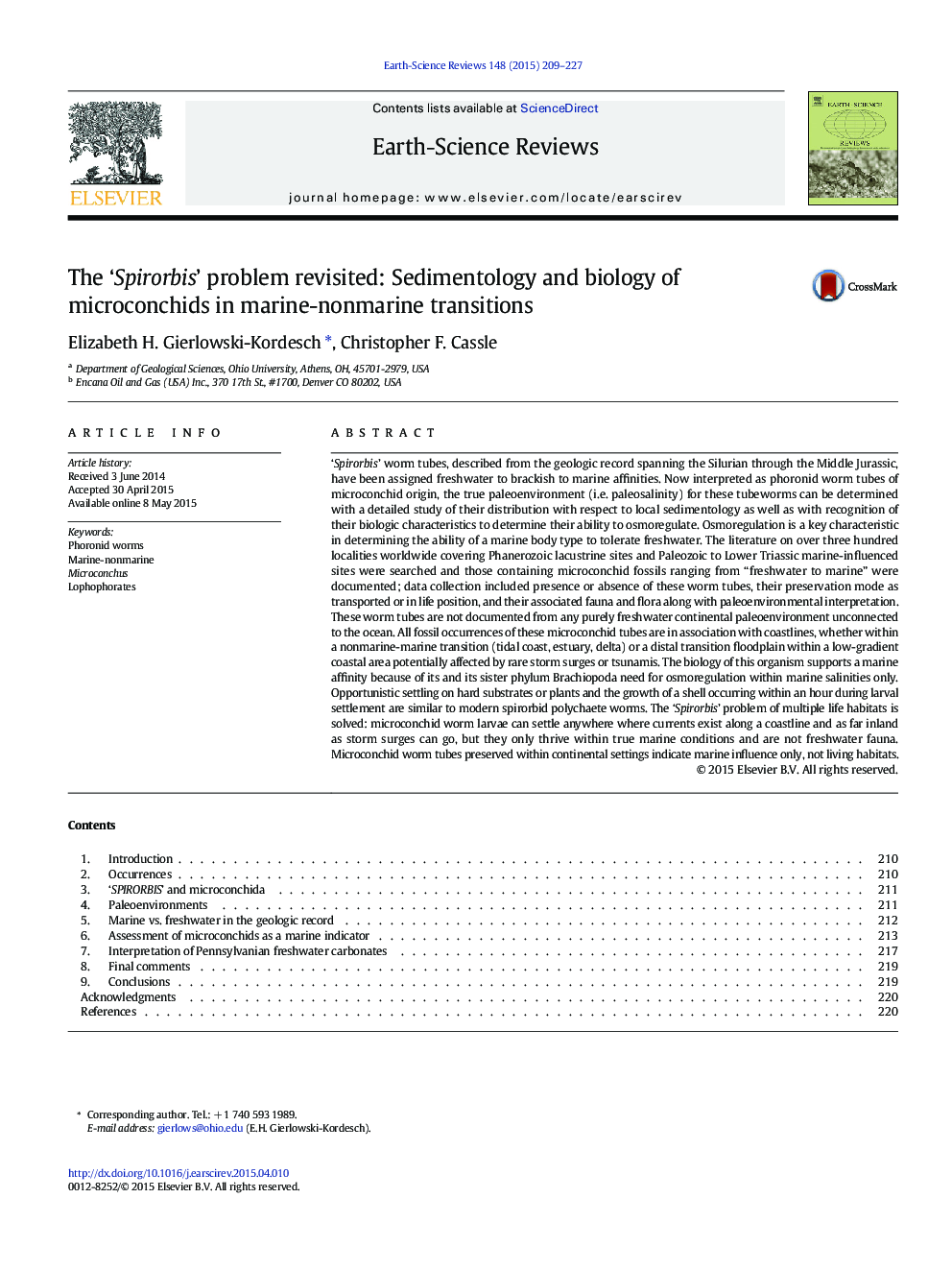| کد مقاله | کد نشریه | سال انتشار | مقاله انگلیسی | نسخه تمام متن |
|---|---|---|---|---|
| 4725652 | 1639954 | 2015 | 19 صفحه PDF | دانلود رایگان |

‘Spirorbis’ worm tubes, described from the geologic record spanning the Silurian through the Middle Jurassic, have been assigned freshwater to brackish to marine affinities. Now interpreted as phoronid worm tubes of microconchid origin, the true paleoenvironment (i.e. paleosalinity) for these tubeworms can be determined with a detailed study of their distribution with respect to local sedimentology as well as with recognition of their biologic characteristics to determine their ability to osmoregulate. Osmoregulation is a key characteristic in determining the ability of a marine body type to tolerate freshwater. The literature on over three hundred localities worldwide covering Phanerozoic lacustrine sites and Paleozoic to Lower Triassic marine-influenced sites were searched and those containing microconchid fossils ranging from “freshwater to marine” were documented; data collection included presence or absence of these worm tubes, their preservation mode as transported or in life position, and their associated fauna and flora along with paleoenvironmental interpretation. These worm tubes are not documented from any purely freshwater continental paleoenvironment unconnected to the ocean. All fossil occurrences of these microconchid tubes are in association with coastlines, whether within a nonmarine-marine transition (tidal coast, estuary, delta) or a distal transition floodplain within a low-gradient coastal area potentially affected by rare storm surges or tsunamis. The biology of this organism supports a marine affinity because of its and its sister phylum Brachiopoda need for osmoregulation within marine salinities only. Opportunistic settling on hard substrates or plants and the growth of a shell occurring within an hour during larval settlement are similar to modern spirorbid polychaete worms. The ‘Spirorbis’ problem of multiple life habitats is solved: microconchid worm larvae can settle anywhere where currents exist along a coastline and as far inland as storm surges can go, but they only thrive within true marine conditions and are not freshwater fauna. Microconchid worm tubes preserved within continental settings indicate marine influence only, not living habitats.
Journal: Earth-Science Reviews - Volume 148, September 2015, Pages 209–227